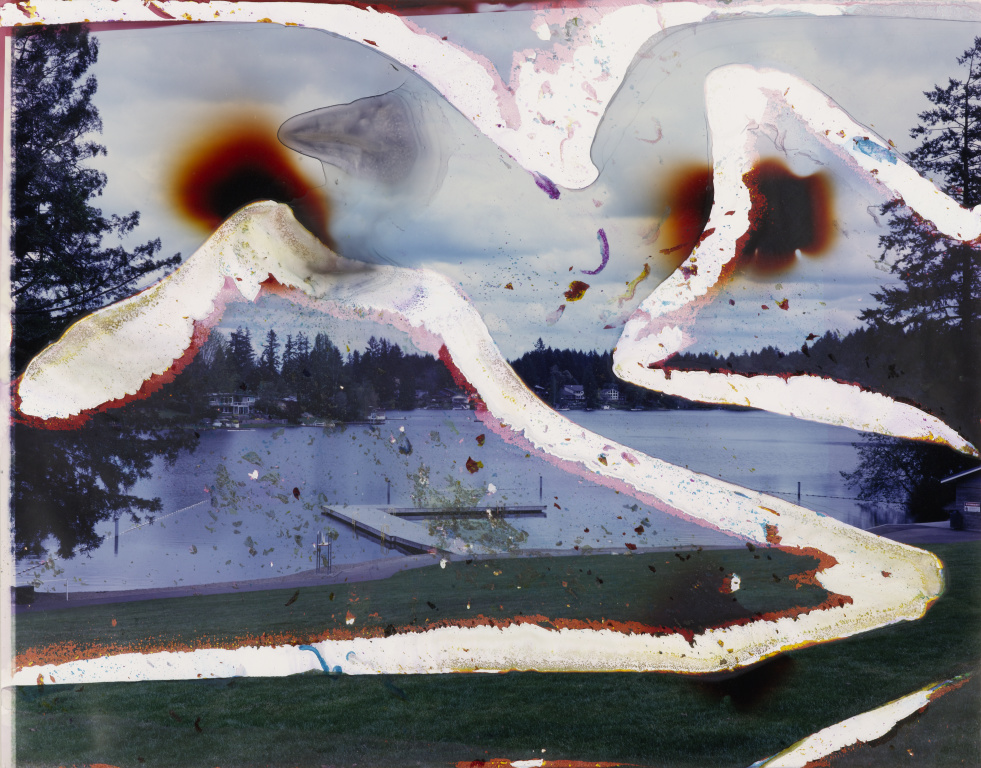Long Lake, WA 10 (work of art)
Artwork Info
Key Ideas about this Work of Art
- This is a photograph of Long Lake in Washington State. The printed image has been soaked in water from the lake.
- Photographer Matthew Brandt physically incorporates his subjects into his photos of them. For his Lakes and Reservoirs series, Brandt soaked his photographic prints of lakes in the water from those specific lakes. The chemicals in the lake water changed the color and tone of the photographs.
- Brandt’s lake photographs bring attention to water quality issues and other environmental concerns.
Learn More
This photograph calls as much attention to the artist’s creative process as to the image itself. Matthew Brandt is an experimental photographer. He shoots postcard-perfect lake views and then soaks the printed images in water from that lake. This process permanently alters the image. The tone and color of the photograph is determined by the chemical makeup of the lake water. The water’s effects on the photographic print suggest an environmental hazard. A lake that appears to be fresh and clean might be hiding pollution beneath its surface.
Brandt says he is influenced by the Hudson River School art movement of the mid 19th century. Hudson River artists often painted panoramas, or wide views, of landscape scenes. Brandt updates that tradition in this abstract work that looks more like a painting than a photograph.
Additional Resources
Resources for Teachers
- Read an interview with Matthew Brandt and view more of his work.
- View more photos from Brandt’s Lakes and Reservoirs series.
- Read a short article about the artist’s work.
Resources for Students
- Watch a video of Matthew Brandt talking about his work and this photograph.
- View an online gallery of images from Brandt’s Lakes and Reservoirs series.
- View a picture and map of Long Lake.

